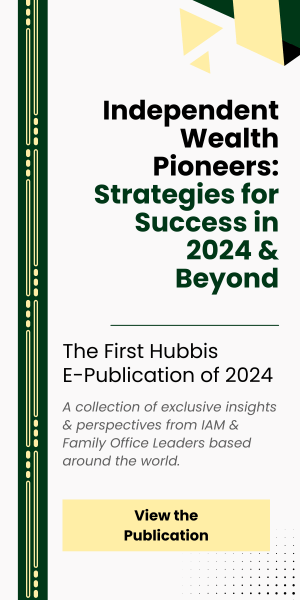Strategy & Practice Management
Upskilling Singapore's private banking talent

Puay See Ong of Everbright Sun Hung Kai
Jun 4, 2015
The Singapore private banking industry's near-100% fulfilment of the Client Advisor Competency Standards (CACS) Continuing Professional Development (CPD) is a good starting point. However, the financial industry's standards-setter, The Institute of Banking and Finance Singapore (IBF), wants to add more meaning, relevance and content to further raise the bar.
The softly-spoken and at-ease persona of Ong Puay See, the chief executive officer of IBF might initially disguise her determination to fulfil a bold vision for the industry: raising the competency bar in Singapore for financial sector practitioners, encouraging continuous upskilling and building a sustained pipeline of talent in wealth management to support the industry’s growth.
She articulates a competency roadmap that she is hopeful will get the industry there. “We see that the IBF Standards are gaining traction, increasing relevance as the benchmark for training and upskilling wealth advisors,” says Ong.
IBF, as the financial industry’s national certification and accreditation body, has been working closely with the Singapore private banking community over the past five years to get to this point. The outcome has been structured certification and ongoing competency assessments that are benchmarked against international best practices.
“The industry has been strongly supportive of IBF’s efforts. Since 2011, the Private Banking Industry Group (PBIG) championed the set-up of common examinations for all Relationship Managers in Singapore,” explains Ong. “In 2013, the PBIG set themselves a target for all Relationship Managers to fulfil a minimum of 15 hours of CPD. All these dovetail into IBF’s overall plan for Relationship Managers to be certified against a set of professional competency standards.”
The approach has already earned recognition from outside Singapore. “We have had a lot of enquiries from our counterparts to share our experience of how we build competency standards,” says Ong. “A lot of them have approached IBF to say that they like what we have been doing in terms of setting industry competency standards and promoting independent accreditation of training programmes. We have been very much energised by this growing interest and have been working in partnership with our regional counterparts to one day achieve a goal of professionalising the industry via a set of common industry standards.”
But despite this, and evidence of the industry’s commitment to ongoing continuing professional development (CPD) in 2014 year-end figures, the IBF is far from complacent.
IBF has clear deliverables mapped out for itself. For example, with the guidance of the PBIG CPD Advisory Group, IBF is now working at ensuring proposed training content is refreshed and refocused on what matters most to clients.
IBF is also considering proposals for the increase of CPD hours and fine-tuning what is defined as eligible-CPD. Plus, IBF, together with the industry, is looking at ways to better understand how to get more out of investments being made in training, based on what gets clocked in the system each year.
From a certification point of view, the IBF has also simplified what’s on offer. And there are now more specific career pathways, both to expose private bankers to complementary areas such as wealth and estate planning, and to train priority bankers keen to move into the HNW segment.
Through such a range of initiatives, combined with the flexibility that drives Ong’s thinking about how to raise standards and competencies to the next level, IBF is confident that efforts to boost competency will help the industry create a clearer value proposition for its clients.
“The IBF Standards provides a clearer CPD roadmap for each private banker, allowing a junior Relationship Manager to progress from being “IBF Qualified” to eventually being recognised as a veteran private banker, holding the title of an “IBF Fellow”. An industry-endorsed certification allows the private banking community to professionalise itself,” she adds.
A solid foundation
The strong CPD results are not a chance success. Since 2011, IBF has worked in partnership with the industry to establish the requirement for private bankers in Singapore to pass the Client Advisory Competency Standards (CACS) before they provide any financial advice.
The rationale was to prevent any situations where private bankers might be exempted from being licensed and therefore ironically be subject to a lower bar than their retail counterparts.
Ong shared further details on IBF’s efforts with the industry in implementing a 15-hour annual commitment to CPD, post-CACS, in March 2013. She says the decision to start with a minimum of only 15 hours of CPD, was in line with this being an industry initiative rather than a regulatory one. “We wanted to place the onus and the emphasis a lot more on the banks themselves to self-police what they feel is most useful,” she explains. “We drew a hard line at 15 hours, but beyond that, the banks are encouraged to scope higher thresholds for themselves.”
After some initial nerves about how bankers would respond to what is ultimately not mandatory, the IBF saw convincing initial results. For 2014, IBF statistics showed that 99.7% of private banking professionals required to undertake relevant CPD did so. And of these, 73% exceeded the minimum 15-hour requirement.
Among other notable developments, the private banking industry increased its usage of e-learning as a training methodology. “This may be attributed to the increasing adoption of technology with interactive functionalities to enhance learning,” says Ong. “E-learning allows wealth professionals, whose work tends to be mobile in nature, to have flexibility in accessing and conducting their self-directed training.”
Fostering the right mind-set
The noteworthy CPD achievement seems to be a result of the approach the IBF has taken to the structure of its CPD framework – a clear focus on the need for industry practitioners to think about training in the right way.
For example, for those people who might have been unable to complete 15 hours in the first year post-CACS, IBF encourages such individuals to catch-up on the hours they have fallen behind. “It should not be seen as a ‘penalty’ that you are doing more training,” says Ong. “Of course there is a structured way we make people do training, but when you start to label certain things as a ‘training quota’, with a ‘penalty’ for those who don’t meet the quota, it stigmatises training as something undesirable. So we need to start by changing the mind-set about training – for it to be seen as an invaluable self-investment, rather than as an unnecessary distraction.”
And with her characteristic optimism, she sees that the industry is increasingly realising that training can lead to a competitive advantage for the individual.
It creates the ability for a wealth institution to offer a proposition which, she explains, is in line with giving assurance to clients that the adviser working with them is actually more competent, in managing their money.
Further, it is a tangible way to identify who is committed to the private banking profession, and who isn’t. “A good thing about the CPD and the high level of enforcement, is it allows the banks to have a frank conversation with every client adviser,” says Ong. “It is about competency-driven employment, where banks are employing [advisers] because they are passionate about keeping their trade. These are individuals who desire to keep relevant, who want to develop lifelong learning and are keen to master their craft.”
That thinking explains why such a large percentage of individuals surpassed the 15-hour CPD minimum in 2014. As do the strict criteria, and caps, set by the IBF for which types of training can count towards the annual requirement, and for how much of it, has had an objective to encourage a mix of learning methods and a variety of content – in turn fostering the right attitude towards competency-upskilling.
“Because we had this approach, the number of true hours that an individual has done is way more than the minimum of 15. Many banks also applaud this effort, as it allows them to start having conversations with their employees about developing career training plans. It is no longer just a lofty ambition, we now have a formal framework in place for structured training to be enforced in a sensible manner,” says Ong.
Staying current and meaningful
The fact that the IBF wants to encourage a higher number of minimum training hours, and has identified key areas for new – or further – coverage, and wants to make it all more meaningful, is key to the success and relevance of the structure and goals of CPD in Singapore.
This has come from the annual discussion within the IBF’s PBIG CPD Advisory Group, to assess the areas of focus for the training completed and then suggest certain priorities.
A scan of the training landscape in 2013 and 2014 showed extensive coverage of three main areas: first, rules and regulations; secondly, product knowledge; and thirdly, client communication and awareness.
The outcome of the latest annual review includes a couple of areas for more emphasis in the coming year – client suitability, risk concepts, wealth and estate planning, tax transparency, cyber security, and the protection of personal data.
Yet this is easier said than done. In particular, areas like tax transparency, risk management, cybercrime and wealth planning, for example, are complex and ever-evolving. So there is a question-mark over the extent to which 15 hours can even start to do justice to what each private banker needs to learn to truly be competent.
Realising this, too, the IBF is considering, how to have more granularity in the statistics it monitors, so as to better identify competency gaps.
“If we can say that [almost] 100% of the industry did 15 hours, but actually the true amount, when removing all the caps, was 25 or 30 hours, for example, then that is a useful statistic,” says Ong.
Further, the IBF is discussing how it can add more meaning to the bluntness of the ‘15 hours’.
“What we will probably do is suggest certain compositions of the number of hours we decide on,” says Ong. For instance, a certain number of hours may be required for regulatory content, a certain amount on product knowledge, client skills and so on.
This is already happening for independent financial advisers and insurance agents under the MAS’ regulatory ambit. The regulator has announced that of the 30 prescribed training hours these individuals need to complete each year, eight of them need to focus on rules and regulations, including four on ethics, for instance.
“The idea of prescribing certain prescribed training hours in this way is something we are considering,” says Ong. “That could be the next variation of how we make CPD a bit more meaningful.”
A growing responsibility
Inevitably, as the complexity and breadth of topics covered increase, the responsibility of the IBF as the standards-setter and administrator for CPD grows.
To ready itself for this, however, IBF has already started its own digitisation and data analytics projects. “Instead of just collecting data for processing purposes and keeping it in vertical silos, we have to make sure we can aggregate all this data and make sense of it,” explains Ong.
More specifically, IBF has already invested in a new IBF Portal, a platform which will allow it to collect more granular training statistics.
This can lead to a more tangible measure of the outcome of the average training dollar invested. And it can help fulfil IBF’s objective of better articulating a stronger value proposition to the requirements for training.
“We can then provide a lot more insight in a strategic advisory role to the industry to identify a competency gap in a specific area,” says Ong.
Benchmarking competency
The decision in the first place to not make training mandatory for private bankers in Singapore was a deliberate one.
While Ong says it was one of the options considered before CACS was introduced, all stakeholders ultimately agreed that it would be a good thing if the industry itself could drive greater competency and lead their own commitment to training.
This can now be seen in all the changes that the IBF, in conjunction with the industry, is considering within Singapore for 2015.
Ong again puts it down to the willingness and drive from within the industry to raise standards as part of a unique value proposition to clients.
“The IBF Standards will always be that set of strategic initiatives developed ‘by the industry; for the industry’,” emphasised Ong, “Since our first inception in 1974, IBF has always believed strongly in working in parallel with the industry to develop high standards to meet the growing needs of the industry. That will always be the hallmark of IBF - working in partnership with the industry.”
“Our vision is a Singapore which can offer to clients well-certified and the most globally-competent private bankers,” says Ong. “That is somebody who is well certified, who elevates his individual competency, in order to raise industry standards.”

Chief Executive Officer at Everbright Sun Hung Kai





